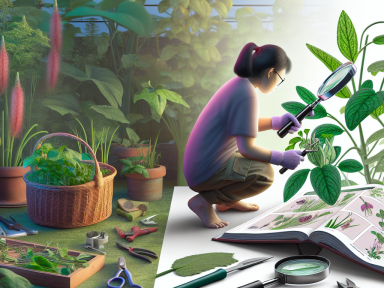Understanding the Basics of Backyard Foraging
In times of economic instability and environmental unpredictability, mastering the art of backyard foraging can be your safest bet for food security. The ability to identify and use the edible plants growing in your own yard isn’t just a hobby—it’s a vital survival skill that can make the difference when grocery store shelves are empty.
Why Backyard Foraging Is Critical
The harsh reality is that reliance on traditional food sources has become precarious. Natural disasters, pandemics, and supply chain disruptions are stark reminders of how quickly food availability can change. By learning to forage, you ensure that you can sustain yourself regardless of external circumstances.
Key Tools for Effective Foraging
To embark on backyard foraging, certain tools are indispensable:
- Field Guide: A comprehensive guide to local flora is crucial for identifying edible plants and distinguishing them from harmful ones.
- Gardening Gloves: Protect your hands from thorns and rough plants.
- Clippers or Scissors: For harvesting plants without damaging their roots or nearby growth.
- Basket or Container: To hold your harvested plants.
Identifying Edible Plants
Understanding which plants are edible is fundamental to foraging. Familiarize yourself with these commonly found edible plants:
- Dandelion: Every part of this plant is edible, from flowers to roots, and is rich in vitamins.
- Nettle: Known for its immune-boosting properties, nettle must be cooked to neutralize stinging hairs.
- Lamb’s Quarters: This weed is nutritious and can be used like spinach.
- Wild Garlic: Easily identified by its distinctive smell, it’s perfect for adding flavor to any dish.
Common Mistakes to Avoid
Mistakes in foraging can be dangerous. Always avoid plants you cannot positively identify and remember that toxic plants often mimic edible ones. Never forage close to roadsides or in areas that may be contaminated by pesticides or pollutants. Lastly, limit the amount you harvest to ensure plant populations can regenerate.
Final Thoughts on Being Prepared
Do not wait for a crisis to hit before you learn the basics of foraging. Start exploring your backyard today, practice regularly, and incorporate what you forage into your daily meals. This will not only improve your skills but also enhance your readiness for any situation. Remember, in a world where food security can no longer be taken for granted, being knowledgeable about backyard foraging is not just wise—it’s essential for survival.




GIPHY App Key not set. Please check settings